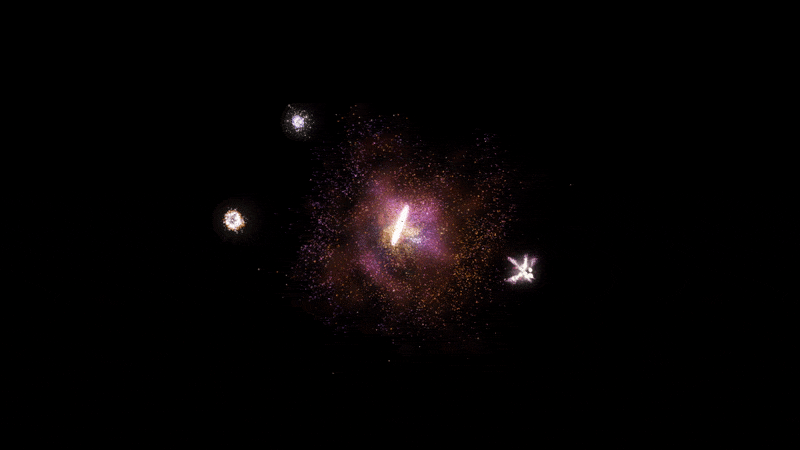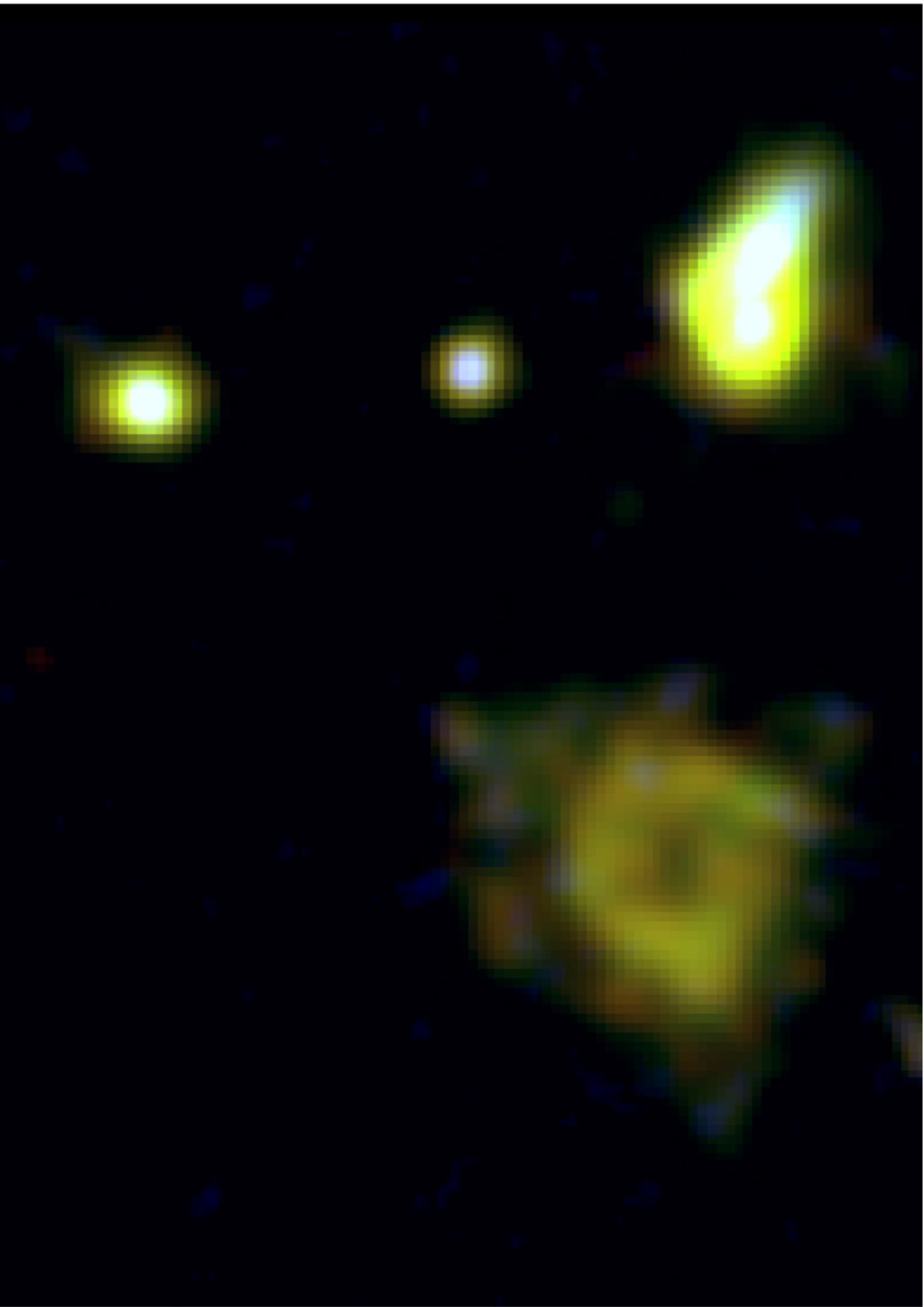Ancient 'ring of fire' galaxy found glaring at Earth across space and time
This galaxy would have once looked a lot like the early Milky Way.
Eleven billion years ago, a hot, active, galaxy that looked like an eye glared across space. Now, using data from the W.M. Keck Observatory in Hawaii and the Hubble Space Telescope, astronomers have captured a snapshot of its unblinking gaze.
This galaxy, R5519, is made up of a flat ring of stars, with a hole in the middle where astronomers believe another blob of stars punched through. Galaxies like this, known as "collisional ring galaxies," turn up infrequently in the modern universe. But this is the first time astronomers have seen one so old and far away; at 11 billion light-years from our planet, its ancient light is only just reaching Earth.
Related: The 15 weirdest galaxies in our universe
Galaxies in the early universe tended to be very active, churning up hot gas and turning it into stars. R5519 is no exception, the researchers said in a statement.
"It is making stars at a rate 50 times greater than the Milky Way," Tiantian Yuan, an astronomer at Australia's Swinburne University of Technology and lead discoverer of the galaxy, said in the statement. "Most of that activity is taking place on its ring – so it truly is a ring of fire."
Most of the ring-shaped galaxies in our universe form through internal processes, the researchers said. Only 1 in 1,000 in the modern universe forms through collisions. Still, according to the new paper, which was published May 25 in the journal Nature Astronomy, this galaxy's shape does appear to be the result of a collision with another object.
This monumental collision offers clues about the conditions that prevailed during the early universe, the scientists said.
Breaking space news, the latest updates on rocket launches, skywatching events and more!
So, how did R5519's unblinking "Eye of Sauron" shape come into being?
For a ring to form, a galaxy like this has to start as a wide, flat disk of stars and gas, the researchers said. One such disk that formed about 9 billion years ago turned into the spiral Milky Way. Another formed Andromeda, a neighboring galaxy.
But R5519's disk, if it indeed existed before another object punched that hole in its center, would have existed a full 2 billion years earlier, just 3 billion years after the Big Bang.
"This discovery is an indication that disk assembly in spiral galaxies occurred over a more extended period than previously thought," Kenneth Freeman, an Australian National University astronomer and co-author of the paper said in the statement.
That changes how astronomers see that early history of the universe.
- 11 fascinating facts about our Milky Way galaxy
- From Big Bang to present: Snapshots of our universe through time
- Twisted Physics: 7 mind-blowing findings
Originally published on Live Science.
OFFER: Save 45% on 'How It Works' 'All About Space' and 'All About History'!
For a limited time, you can take out a digital subscription to any of our best-selling science magazines for just $2.38 per month, or 45% off the standard price for the first three months.

Rafi wrote for Live Science from 2017 until 2021, when he became a technical writer for IBM Quantum. He has a bachelor's degree in journalism from Northwestern University’s Medill School of journalism. You can find his past science reporting at Inverse, Business Insider and Popular Science, and his past photojournalism on the Flash90 wire service and in the pages of The Courier Post of southern New Jersey.




